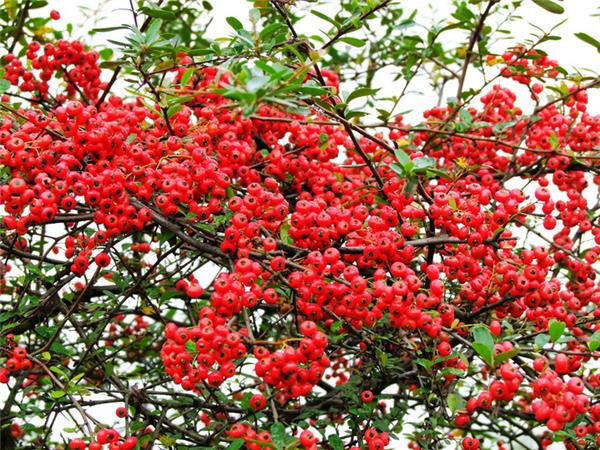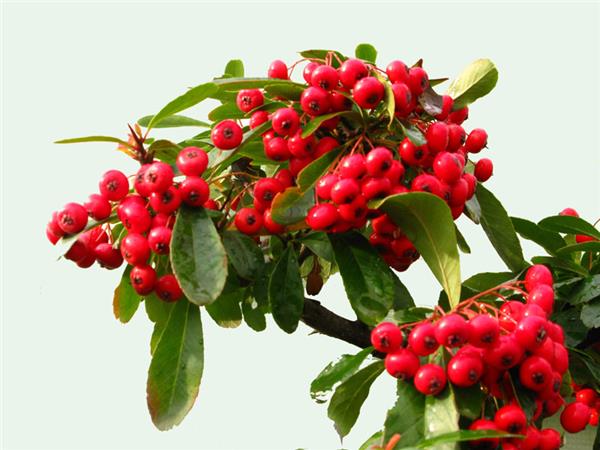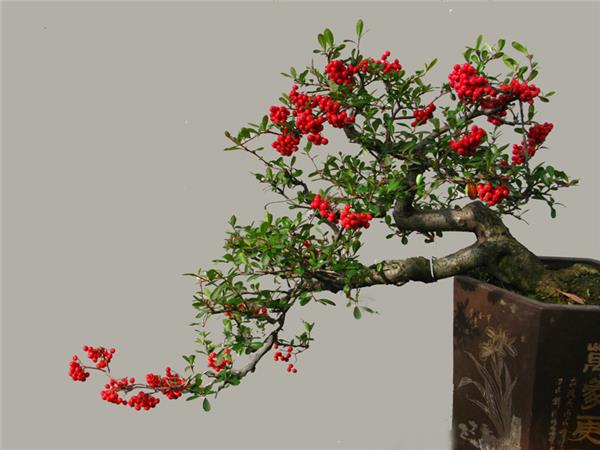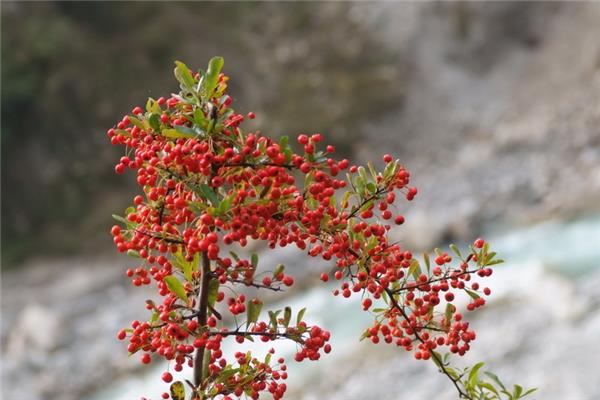What is the culture method of Firethorn? how to raise Firethorn?
The role of Pyracantha is very many, so Hippophae rhamnoides has a relatively high culture value, but it should also be carefully taken care of in breeding to prevent it from being infected with insect pests and so on.

The function and effect of Pyracantha
Watch: Hippophae rhamnoides is evergreen all the year round, the branches and leaves are soft and small, the leaves are waxy, white flowers bloom in spring, then hang green fruit, and the fruit turns fiery red in late autumn. it is a very ideal flower bonsai with high ornamental value.
Works of art: Firethorn wood is hard and resilient. For more than ten years, firethorn is a first-class wood material, its roots can naturally produce abnormal and strange shapes, and 3-5-year-old firethorn roots can be used as root carving works of art.
Food: Hippophae rhamnoides fruit is rich in organic acids, proteins, amino acids, vitamins and a variety of mineral elements, which can be eaten fresh or processed into various beverages.
Medicinal: the root of Hippophae rhamnoides can be used as medicine, its nature is bitter and astringent, and it has the effects of relieving diarrhea, removing blood stasis and eliminating food, and the fruit, leaf and stem bark also have similar effects. Hippophae rhamnoides leaves can make tea, with heat-clearing and detoxification, Shengjin and thirst, convergence and antidiarrheal effect.

Culture method of Pyracantha
Matrix: the use of river sand or loose permeable soil. The river sand can be washed clean with boiling water, and the cultivated soil can be disinfected by sunlight or 50 times formalin solution.
Temperature: Hippophae rhamnoides like warm, but have a certain degree of cold resistance, potted plants should be moved into the room, in order to ensure that their leaves do not fall, the lowest temperature should be about 5 °C, can also be used to protect against cold, that is, the pot is wrapped with dry straw, outside the pot or the whole potted plant is planted in a plastic bag, the bag should be appropriately large, choose a colorless transparent bag, tie it up and put it in a place of shelter from the wind and the sun, and open the bag mouth to ventilate when the temperature is high at noon.
Illumination: firethorn is a light-loving tree species, in addition to short-term shade at the initial stage of planting, the whole growing season should be maintained under full light conditions, potted firethorns placed on the cement or ceramic tile floor should be properly shaded in the hot summer season to prevent leaf burns. Plants that are placed indoors to watch fruit in winter should be placed in a sunlit place.

Fertilization: after Hippophae rhamnoides was planted and survived, rarefied fertilizer and water was applied every 1520 days to promote its rapid branch formation. After 3 years of planting, base fertilizer was applied once a year in winter or spring.
Watering: just on the pot of plants, 8: 00 in the morning and 6: 00 in the evening respectively watering, and the branches should be sprinkled with water. When the new bud is 5-6cm, it only needs to be watered once a day. The soil should not be too wet. When the bud is 8-10cm, the new root will grow and be watered according to the soil quality. A handful of spring blossoms can be fully watered at one time, flowering because it coincides with the rainy season, pay attention to timely drainage, watering enough water before winter.
Pruning: naturally growing plants are messy in shape and are not conducive to the growth of internal branches, so they have to be pruned every year to cut off unnecessary overgrown, vegetative and overdense branches, leaving new long short branches.
Insect pests: the main pests are shell insects and aphids. The former can be removed with iron wire, knife and other hard objects, or 0.1% of the oil floating agent can be sprayed on the plant, buried carbofuran added to the soil, and comprehensively removed. The latter oxidizes dimethoate or dichlorvos to remove.

Generally speaking, Hippophae rhamnoides is relatively easy to breed, because it is naturally strong and adaptable, and as far as planting methods are concerned, the technical content required by potted plants is much lower than that of ground planting, so everyone can try to cultivate it.
Related
- Wuhan Hospital Iron Tree Blooming Result Was Instantly Frightened by the Gardener Master
- Which variety of camellia is the most fragrant and best? Which one do you like best?
- What is the small blue coat, the breeding methods and matters needing attention of the succulent plant
- Dormancy time and maintenance management of succulent plants during dormancy
- Minas succulent how to raise, Minas succulent plant pictures
- What are the varieties of winter succulent plants
- How to raise succulent plants in twelve rolls? let's take a look at some experience of breeding twelve rolls.
- Attention should be paid to water control for succulent plants during dormant period (winter and summer)
- Watering experience of twelve rolls of succulent plants
- Techniques for fertilizing succulent plants. An article will let you know how to fertilize succulent plants.



